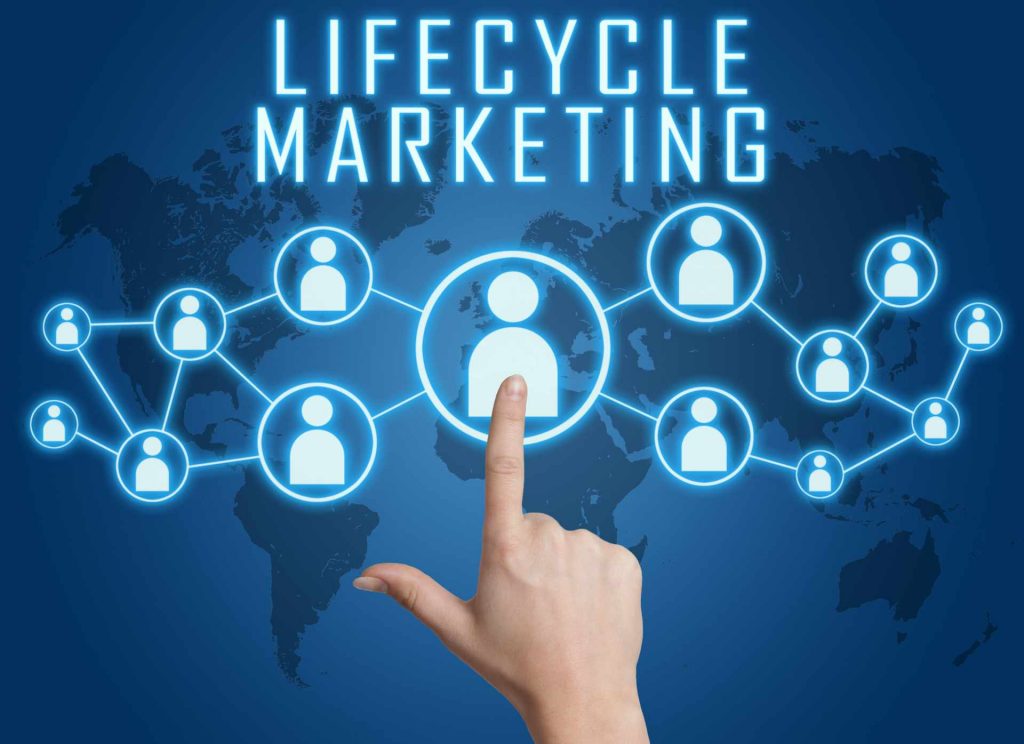
The software as a service (SaaS) market is growing rapidly. According to predictions by Gartner, the industry will be worth $143.7 billion by 2022. But besides the growth, SaaS business leaders and Custom Success Managersare are facing challenges.
The challenges occur if SaaS business owners aren’t aware of the unique SaaS customer lifecycle. If you can’t understand the behavior of your customers your company won’t grow fast enough. You are in a lucrative industry but only if you take a customer centric approach.
The problem is that many SaaS business owners focus on the software side of their business but they don’t take enough time to understand the service side. So, take your time to understand the SaaS customer lifecycle. Use it to create a marketing and sales strategy that works for your software.
What is the SaaS Customer Lifecycle?
Some people claim it has nine steps, others say it has six. But what’s important isn’t the number of steps – it’s what the steps tell us about your customers. To keep it simple, let’s look at the three main steps first.
Acquire – Engage – Retain
In a nutshell, every customer lifecycle consists of these three steps: acquire customers, engage them, and retain them. It’s true for every product or service.
The SaaS customer lifecycle is unique because, usually, the retention phase is harder than for other services. But let’s have a closer look at each step.
Acquire
Acquire is the step where you bring in new customers. You might think the more people you acquire the better. But that’s wrong.
The thing is, you want to acquire qualified customers who will benefit from your software. When it comes to the SaaS lifecycle, quality is more important than quantity.
Unqualified customers only stay for a test period, like a free trial. Or they might be interested for a few months but not long enough to fully benefit from your SaaS product. So, make it your focus to acquire qualified prospects and customers.
Engage
After the acquiring step, you have people waiting to test your SaaS. Usually, they will go for your free trial (if you offer one). Make sure the trial is long enough to win them over while still being profitable for you.
During the engagement step, it’s your chance to show customers how effective and valuable your software is. If they don’t see the value, they might drop out here.
Retain
Retaining customers isn’t as hard as acquiring them. Yet, some SaaS businesses are so focused on getting in new customers that they forget about existing ones.
If you have a monthly subscription model, you need to retain customers for quite some time to become profitable. So, ignoring or forgetting about them isn’t a good idea. Provide customer success and support before they even think of opting out.
If people churn, follow up with them and find out why. This will help you to work out kinks and retain more customers in the future.
The 6 Stages of the SaaS Lifecycle
Now that you understand the three crucial steps of the SaaS customer lifecycle, we can go deeper. These 6 steps will help you understand what your customers are thinking during the process. if you understand what they are going through you can create customer-focused marketing.
1. Awareness
During this first stage, your prospects become aware that they have a problem. They look for solutions online and might come across your SaaS solution. To achieve success in this stage, make sure you clearly communicate the problems you are solving. If your message is confusing or you don’t solve a clear problem, prospects will move on to the next best thing
2. Conversion
In the conversion stage, your customers take a closer look at your service. They will consume free resources like ebooks, free trials, or your blog. Your goal for this stage is to show your customers the value of your product. If they believe it’s valuable and solves their problem, they will buy.
3. Purchase
Now your customer is convinced they need your SaaS and they buy. Amateurs think that the customer lifecycle ends here – don’t make that mistake! We are only halfway done.
During this stage, you want to pay extra attention to your customers. Answer their questions and provide service for them. If customers feel well cared for, they will stay with you longer.
4. Activation
Most SaaS products rely on monthly subscriptions. So, to be profitable and to provide the best service possible, you need to activate your users. Your goal is to turn them into active weekly or daily users.
When they actively use the software they will see how valuable it is. Countless SaaS apps get downloaded only to be forgotten after two weeks. The last thing you want to be is another app on someone’s phone.
5. Renewal
Depending on your model, customers might have to renew every month, after a few months or after a year. Pay close attention to customers who are close to renewal time. They might have objections or plan to stop using your SaaS. Communicate with them to find out about objections before they become a problem.
6. Referral
A customer who renews usually turns into a loyal fan and power user. They are the type of customers who tell their friends and colleagues about your service – and they will stay with you for a long time. The more power users you have the better. It’s profitable and these users are great people to ask for feedback and fresh ideas.
Common Pitfalls
Now that you understand the SaaS customer lifecycle, you know what to pay attention to in each step. Yet, there are a few easy-to-overlook pitfalls you need to avoid. What are the most common pitfalls when it comes to the SaaS lifecycle?
1. Selling to the wrong people
This is a common pitfall. Not everyone who consumes your free resources or gets the free trial is a perfect fit. Buyers who are only using your service because it’s free don’t see the full value. They are also less likely to buy cross-sells or upsells, and potentially become unhappy customers. Keeping prospects like that in your ecosystem doesn’t benefit you nor them.
To avoid unhappy customers, make sure you are involved with prospects during the trial and demo process. Communicate with them, show them the key features, and remind them when it’s time to upgrade.
2. Underestimating the buying process
Buying isn’t a one-time event, it’s a process. But when it comes to SaaS products, salespeople often think it sells itself. They think that Prospects get the free trial, they like it and buy – Done.
Unfortunately, it’s not that easy. To successfully sell, you need to understand the pain of your customers. What kind of problems do they have that lead them to you? Are they ready to buy right now or do they need more guidance?
You also want to understand timing. How long does it take for prospects to make a purchase decision after their problem occurred? Do they need a 14-day trial or a 30-day trial? Get crystal clear on their buying process. Tailor your product cycle to their needs.
3. Over-focusing on one stage
We touched on this before – but it’s one of the most common pitfalls. Some SaaS companies focus too much on the acquiring stage. But once they acquire a customer they stop communicating.
Others focus too little on the retain stage. They aren’t aware of when and why people usually opt- out and how to improve the software to retain more customers.
Focusing too much or too little on one stage creates friction. Ideally, your focus is even and purpose-driven across all SaaS lifecycle stages.
4. Not offering cross- or upsells
Another common pitfall is SaaS companies don’t offer upsells to happy customers. They already love your service, so why wouldn’t they buy more? Give them a chance to buy more by offering it to them.
5. Too many updates and new features
Updating and adding new features to your SaaS is a great way to engage and retain your customers. But some companies make the mistake of updating too often and letting customers figure out the new features on their own.
That can be overwhelming and your customers might not understand the full value of your updates. So give them time to test new features and support them with demos and other explanations.
Mastering the SaaS Customer Lifecycle
Now that you know what the customer lifecycle looks like and what to pay attention to – which steps should you take? Well, take these 5 steps to truly master the SaaS lifecycle.
Define Your Target Customer
To be customer-centric, you have to understand your customers to their core. This includes demographics like age, profession, and location but also psychographics like their pain points, fears, hopes, and dreams.
Define a customer avatar and find out how they behave, think, and feel in every stage of the life cycle. If you know who you are serving, your marketing and sales efforts will be more fruitful.
Outline Your Funnel
Think of a funnel as the key touchpoints in the sales process. How does your ideal customer find out about your service? What do they do next? How long does it take them to buy?
Considering all of this allows you to build a marketing funnel that guides them through the buying process.
Align Marketing and Sales
A big issue SaaS companies face is that their marketing and sales teams operate as separate units. But in reality, marketing and sales are two sides of the same coin.
If the teams don’t communicate, problems occur. For example, the sales team might talk to leads who aren’t qualified to buy. The marketing numbers look great but no sales are coming in. The marketing team blames the sales team while the sales team says it’s the marketing’s fault. Avoid all of this by creating an aligned sales and marketing process.
Maintain Innovation
Successful SaaS companies have product roadmaps that show the direction they want their products to go. This can include new key features and upsells. This is great to keep customers engaged and to provide clarity to your team. Everyone knows where you are heading.
Upsell Existing Customers
As we said earlier, not offering upsells or cross-sells costs you greatly. Happy and engaged customers want to buy more. It’s also a good idea to monitor and improve the upsell process over time. If an upsell goes wrong and drives customers to opt-out, analyze why, and use it to improve your sales cycle.
Conclusion
The SaaS customer lifecycle is different from other product life cycles. Acquiring qualified customers is harder and retaining them is a critical step that doesn’t get enough attention. Use the SaaS lifecycle to understand your buyers and to create a customer-focused marketing and sales process.
If you are unsure about your marketing strategy, Slayr Media is happy to help. Let’s talk and explore how we can boost your revenue today.


